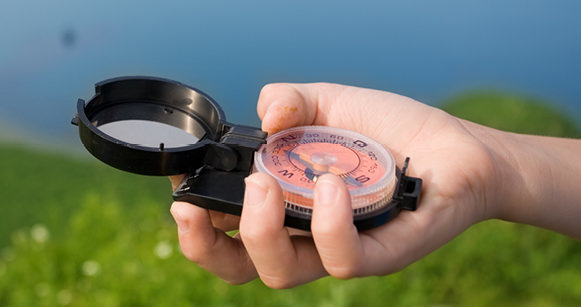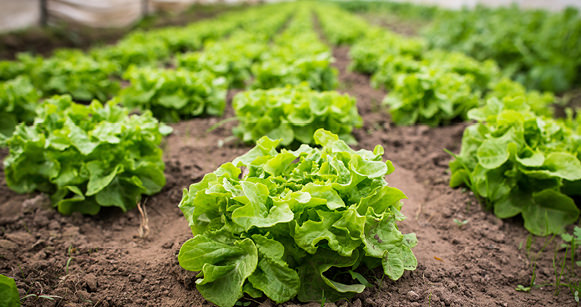LEARNING ACTIVITY
STORY
Beth and the Junior Landcare group were very keen to find the best place for their proposed food garden. They had often been in the playground and had noticed that there was a sunny spot beyond the school oval. Beth said that whilst this was a good location, she felt it was a bit far away from school activity and wondered if there might be a closer location. Could they evaluate places around the school to choose the best location? They spoke to the teacher Ms Gorman and discussed their idea. Beth had printed out the Creating a Food Garden site assessment activity sheet to help begin the task.

This activity involves the mapping and assessment of local environments to create the best food garden.
This learning activity is part of a sequence of 5 individual learning activities focused on creating a food garden. The order of these learning activities are: vision, site assessment, installing a no dig garden bed, planting and harvesting.
For children to:
• understand more about the location and physical aspects of outdoor spaces
• learn mapping and assessment skills
• undertake an assessment of outdoor spaces.
Exploring your outdoor space will need to account for the different variations in temperature and climate conditions. The location of the sun and shade will vary according to the time of day and the season.
Introduction
In this activity we will be getting to know our own grounds so that we can locate the best position for a food growing garden. Working in teams will help build skills for working together in the development of the food garden.
*Time allocation will be dependent on site selection and travel time.
Checklist
Instructions
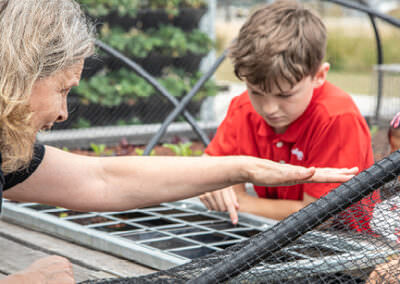
Step 1
Mapping and understanding your local space will help you explore the possibilities and decide the best location for creating a food garden.
Begin discussion by exploring what plants need to grow in your food garden. Include discussion around water, light and soil.
Gather any background information including other maps to help your discussion.
Where is the best location for our food garden?
Explain that we will be exploring the grounds to determine what the best location might be for a food garden.
To determine the best location for the food garden, account for the access to water, sunlight and shade, and that many plants do not like to grow in windy areas.

Step 2
Define the areas you will explore together and distribute the printable activity sheets, pencils and clipboards. Children can work in groups.
If you have existing site maps, refer to it so that can point out north and other directions. Use the compasses to orient where north and south is and refer to it on your map/s.
Ask children to use their observation skills to look closely at their environment to understand it more.
You might like to take photos to capture your observations.
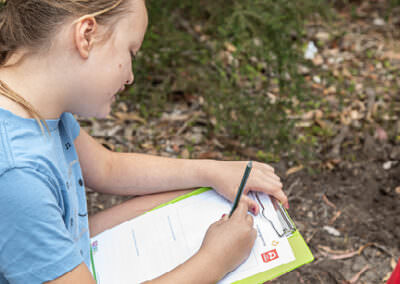
Step 3
With the resources ready, conduct a walk around your grounds to assess each location.
Consider the size and shape of your food garden, noting it is a good idea to start small.
Children will use their observation skills to assess, map, label and photograph:
- location of buildings and other features
- location of water sources
- visibility – a location that people will see regularly
- ease of access for garden helpers
- drainage
- shade
- wind
- soil types
- safety.
Complete the activity sheet with your observations for each identified site.
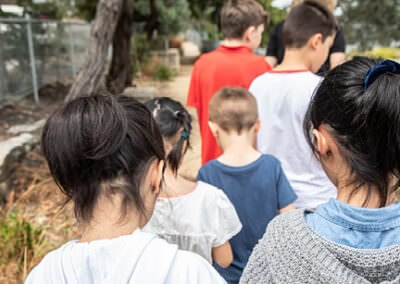
Step 4
Review each activity sheet and discuss locations to determine the best location for your food garden.
To help make your ultimate decision, return to each site at different times to note variations.
Children can debate and vote on which site they feel is the best location. Their maps can help inform others and be displayed.
Extension Activity
Ask others for help in making your ultimate location decision. Contact your local Landcare group by searching the National Landcare Directory or use the Woolworths Junior Landcare Grants Map to find a local grant recipient near you. We encourage you to strengthen your connection with the Landcare community.
Printing out a location map can help you develop further plans, these can be used as a base for a garden design. Collect the maps, photos and drawings to display in an ideas folder or the class journal. These will also help develop ideas for writing an application for a Junior Landcare grant.
Curriculum and Framework Links
SCIENCE
Year 2: ACSSU030, ACSHE035
Year 3: ACSSU044, ACSIS054
Year 4: ACSHE062, ACSIS064
Year 5: ACSHE083
Year 6: ACSSU094, ACSHE100
Year 7: ACSHE120
Year 8: ACSHE135
HUMANITIES AND SOCIAL SCIENCES
Year 2 : ACHASSI042
Year 3: ACHASSI052, ACHASSI059, ACHASSI060
Year 4: ACHASSI080, ACHASSK088, ACHASSK090
Year 5: ACHASSI102, ACHASSK120
Year 6: ACHASSI122, ACHASSI130
DESIGN AND TECHNOLOGIES
Year 2: ACTDEK003
Year 3/4: ACTDEP017
Year 5/6: ACTDEP019
Year 7/8 ACTDEK032
HEALTH AND PHYSICAL EDUCATION
Year 2: ACPPS018, ACPPS022, ACPPS023
Year 3/4: ACPPS036, ACPPS040, ACPPS041
Year 5/6: ACPPS054, ACPPS059
year 7/8: ACPPS073, ACPPS078
ETHICAL UNDERSTANDING
Exploring values, rights and responsibilities
PERSONAL AND SOCIAL CAPABILITY
Social awareness
CROSS CURRICULUM PRIORITY
Sustainability
MY TIME, OUR PLACE: FRAMEWORK FOR SCHOOL AGE CARE
Outcome 2 and 4
Reference List
ONLINE RESOURCES
Use Google maps in satellite mode to create and print a map for your area.
Learn more about topographic mapping from Geoscience Australia.
Resources on how to start a kitchen garden from Healthy Kids Association.
Just for Kids
Check out our fun activity Maze through the playground.
We value your feedback
When you have finished this learning activity, please tell us what you think with our survey.
Your feedback will help Landcare Australia improve the activities in the Junior Landcare Learning Centre.
Why not try one of our other Junior Landcare learning activities?
Love Letters to the Land
Biodiversity|First Nations Perspectives|Food Production|Waste Management
Creating a food garden: vision
Food Production
Creating a food garden: planting
Food Production
Creating a food garden: installing a no dig garden bed
Food Production
